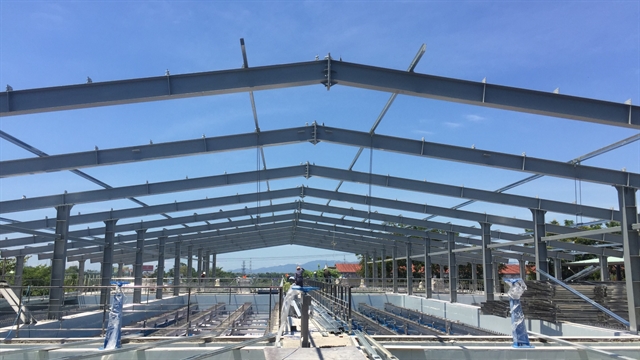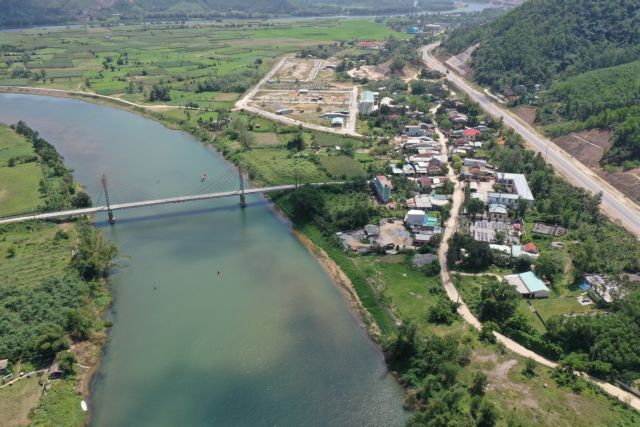 Environment
Environment

The Đà Nẵng Water Supply company (Dawaco)’s clean water network can provide an average of 310,000 cubic metres of clean water each day, 84 per cent of the city’s total water demand, after completing upgrades in May.

|
| A new water plant is completed for operation in Đà Nẵng city. New key water projects were invested by the city to secure water supply in high season in summer. Photo courtesy of Dawaco |
ĐÀ NẴNG — The Đà Nẵng Water Supply company (Dawaco)’s clean water network can provide an average of 310,000 cubic metres of clean water each day, 84 per cent of the city’s total water demand, after completing upgrades in May.
Dawaco said the company’s water supply system would hit a capacity of 350,000 cubic metres daily to supply 95 per cent of the city’s demand six months later.
Meanwhile, the firm's new Hòa Liên water plant is set to add another 120,000 cubic metres to the city’s water network per day by the end of 2021.
General director of Dawaco, Hồ Hương, said a series of key projects had been rapidly constructed in 2019-20, including the water plants of Cầu Đỏ and Khe Lạnh and three small plants in Sơn Trà District.
He said for the An Trạch pump station, temporary dam systems were built on the Quảng Huế and Cẩm Lệ rivers to reduce salinity, while a 285km water pipe system was installed to carry a huge volume to the end of pipe system effectively.
Hương added that the Cầu Đỏ water plant's capacity increased from 170,000 cubic metres in 2018 to 290,000 cubic metres per day this year.

|
| Cu Đê River in suburban of Đà Nẵng supplies fresh water to Hòa Liên Water Plant in Đà Nẵng city. The city's water network could supply 370,000 cubic metres each day by the end of 2021. VNS Photo Trần Lê Lâm |
“We strongly believe our network is readied for the highest demand with the best quality this summer. The network will operate at its maximum capacity of 350,000 cubic metres per day by the end of this year,” Hương said.
“The raw water input system at the Cầu Đỏ was designed to collect enough freshwater from high salinity in summer. It completely dealt with the shortage of water during the dry season due to high salinity at the Cầu Đỏ water plant,” he said.
Two temporary dams were built in the upstream Quảng Huế and Cẩm Lệ rivers to reduce salinity for the pump station to take fresh water to the lower river, he said.
Hương said the city’s water system was designed to have its capacity increased from 400,000 cubic metres in 2022 to 800,000 cubic metres per day in 2030.
“We asked the city to invest in a permanent dam on the Quảng Huế River as the temporary dam costs from VNĐ500 million (US$22,000) to VNĐ1 billion ($43,500) to repair each year,” he said.
According to Đà Nẵng’s construction department, the upgraded water supply system, pump stations, water pipes and new water plants could supply enough clean water to the farthest end of the water pipe system in Sơn Trà and Cẩm Lệ districts.
The city also asked for the reservoirs of the two hydropower plants A Vương and Đắk Mi 4 to jointly operate to aid the dilution of salinity in the Vu Gia-Thu Bồn rivers – a major water source for Đà Nẵng.
The department said the city’s major water supply system often suffers a serious lack of clean water, while reservoirs of hydropower plants, including Sông Tranh 2; Đắk Mi 4; Sông Bung 4,5 and 6; and A Vương, often collect water from the rivers to generate power.

|
| A section of the anti-salinity dam in Quảng Huế River. The dam will help reduce salinity in the river in supplying fresh water to Đà Nẵng in dry season. Photo courtesy of Dawaco |
Đặng Nguyễn Thục Anh, from the city’s natural resources and environment department, said a joint-action plan was proposed among upstream hydropower plants.
She said the operators of the A Vương and Đắk Mi 4 hydropower plants agreed to discharge at least 8.2 million cubic metres for the Cầu Đỏ water plant in the dry season when salinity in the Cầu Đỏ River hits 1,000mg per litre – a standard for collecting fresh water for the city’s network. — VNS




